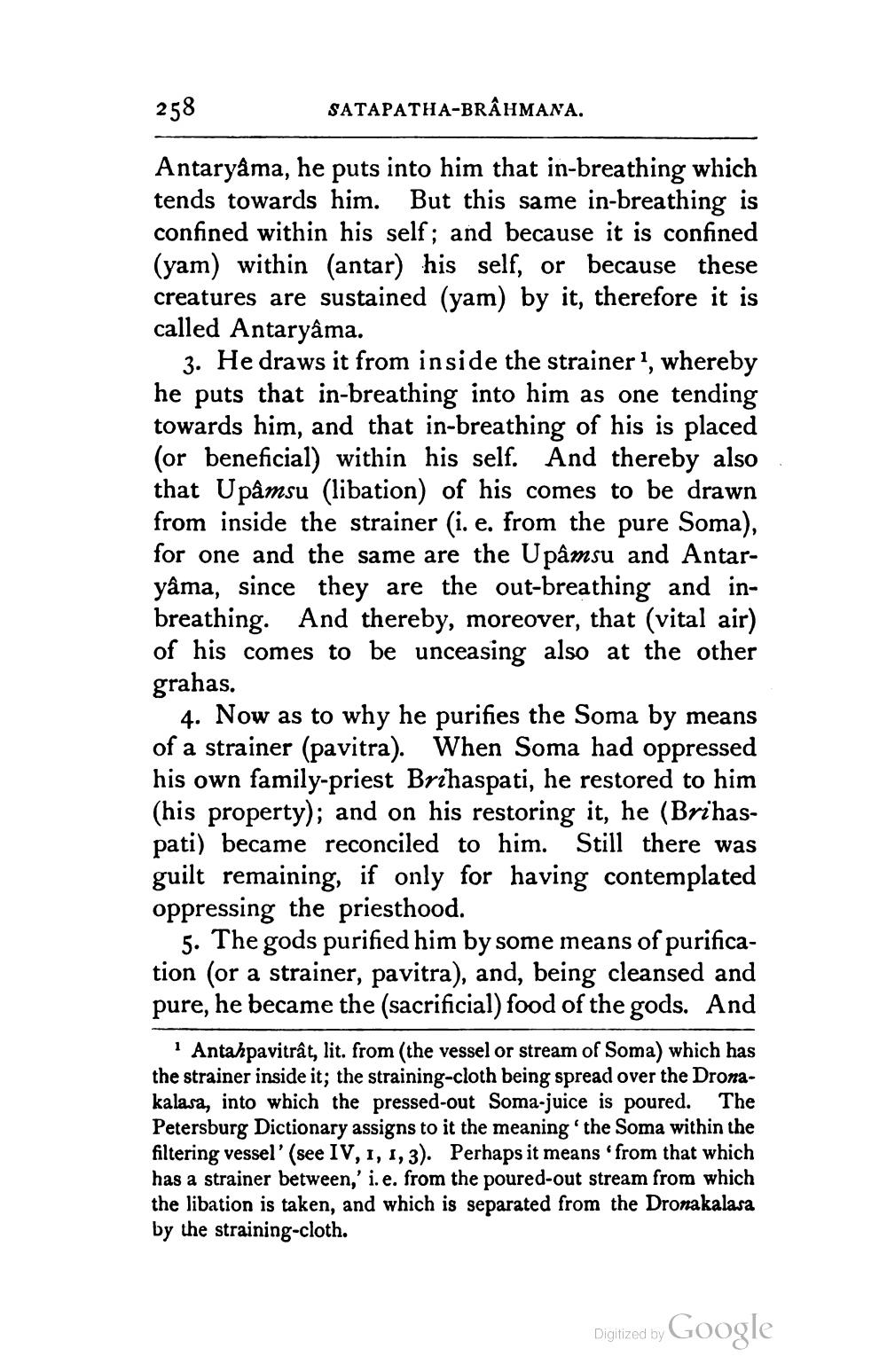________________
258
SATAPATHA-BRAHMANA.
Antaryâma, he puts into him that in-breathing which tends towards him. But this same in-breathing is confined within his self; and because it is confined (yam) within (antar) his self, or because these creatures are sustained (yam) by it, therefore it is called Antaryâma.
3. He draws it from inside the strainer", whereby he puts that in-breathing into him as one tending towards him, and that in-breathing of his is placed (or beneficial) within his self. And thereby also that Upâmsu (libation) of his comes to be drawn from inside the strainer (i. e. from the pure Soma), for one and the same are the Upâmsu and Antaryâma, since they are the out-breathing and inbreathing. And thereby, moreover, that (vital air) of his comes to be unceasing also at the other grahas.
4. Now as to why he purifies the Soma by means of a strainer (pavitra). When Soma had oppressed his own family-priest Brihaspati, he restored to him (his property); and on his restoring it, he (Brihaspati) became reconciled to him. Still there was guilt remaining, if only for having contemplated oppressing the priesthood.
5. The gods purified him by some means of purification (or a strainer, pavitra), and, being cleansed and pure, he became the (sacrificial) food of the gods. And
Antahpavitrât, lit. from (the vessel or stream of Soma) which has the strainer inside it; the straining-cloth being spread over the Dronakalasa, into which the pressed-out Soma-juice is poured. The Petersburg Dictionary assigns to it the meaning 'the Soma within the filtering vessel' (see IV, 1, 1, 3). Perhaps it means 'from that which has a strainer between,' i.e. from the poured-out stream from which the libation is taken, and which is separated from the Dronakalasa by the straining-cloth.
Digitized by Google




